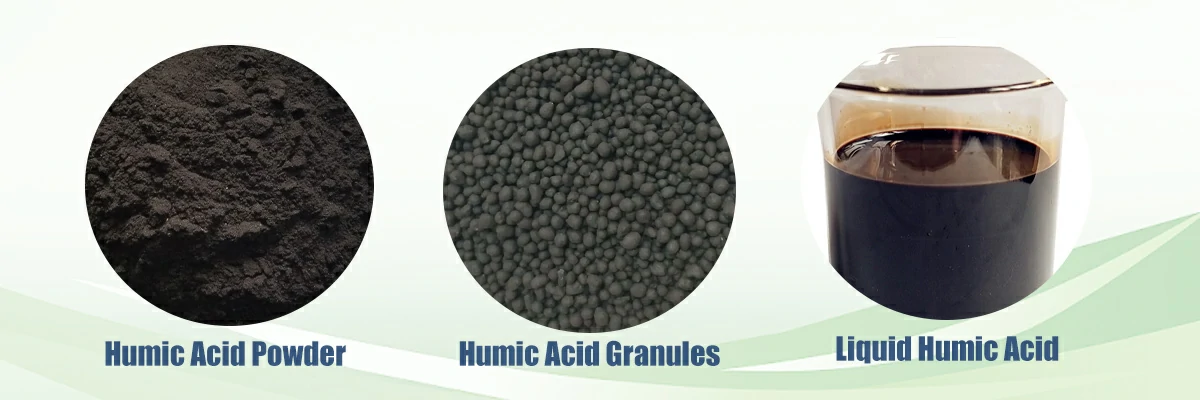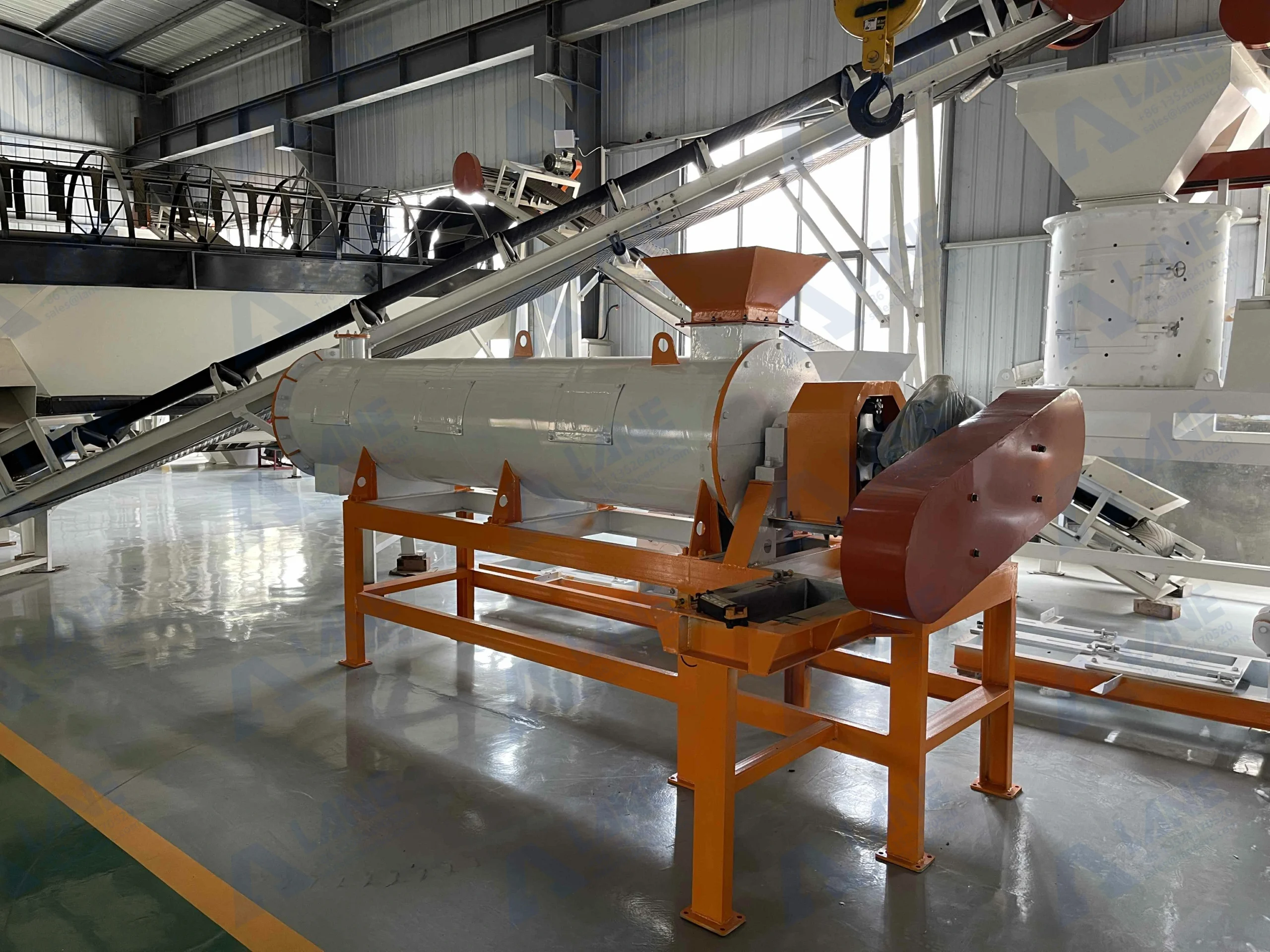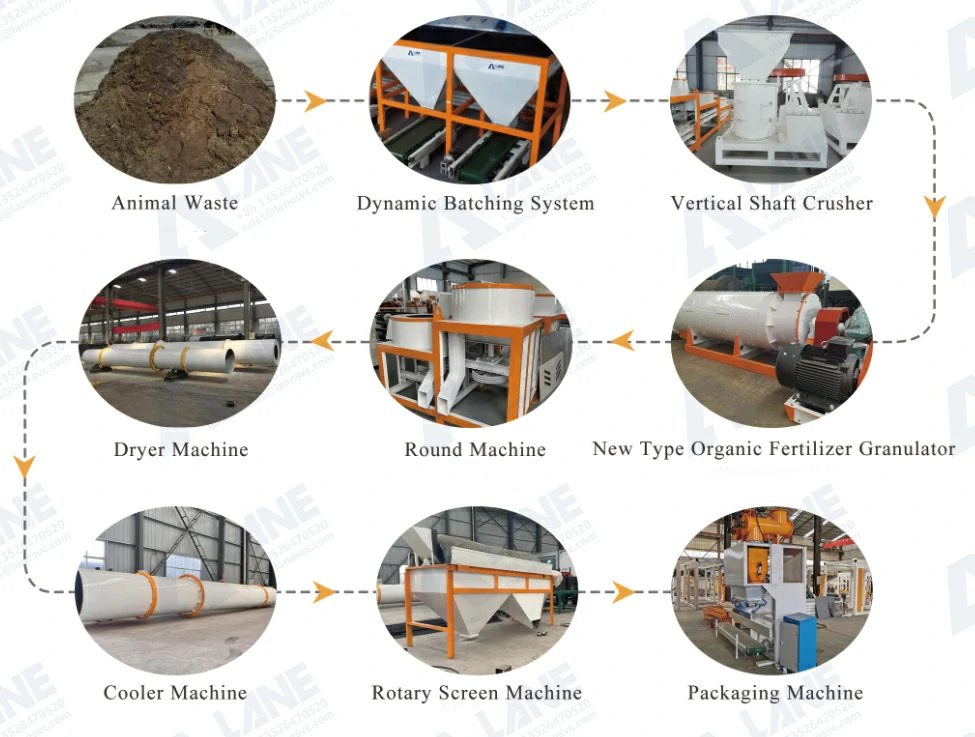author: Zero Shen
from: LANE Machinery Groups
Humic acid fertilizer is an organic fertilizer that contains humus. Humus, such as peat, lignite or other humus-rich organic matter. Humus is a complex organic compound formed during the decomposition of plant and animal matter in the soil.
1) Powdered humic acid: This is a dried powdered humic acid that can be mixed with soil or applied as a top dressing, commonly used in agriculture and horticulture.
2) Liquid humic acid: Liquid humic acid fertilizers are often easier to apply and can be diluted with water and applied as a foliar spray or root drench, which promotes nutrient uptake by plants.
3) Granular humic acid: Granular formulations release humic acids at a slower rate, making them suitable for long-term soil amendment. They are usually applied to the soil at planting or used as a base fertilizer.
1) Soil improvement: Humic acid improves soil structure by increasing water holding capacity, aeration and cation exchange capacity (CEC) of the soil. It improves soil fertility and reduces soil erosion.
2) Nutrient retention: Humic acid helps chelate or bind essential nutrients in the soil, making them more readily available to plants, reducing nutrient runoff and improving nutrient utilization efficiency.
3) Resistance: Plants treated with humic acid are often more resistant to environmental stresses such as drought, heat and salinity. It also reduces the effects of heavy metal toxicity in the soil.
4) Promotes root growth: Humic acid promotes root development, resulting in healthier plants and higher yields.
5) Improves seed Germination: Humic acid improves seed germination and promotes stronger seedlings.
6) Microbial activity: Humic acid stimulates beneficial microorganisms in the soil and promotes a healthier soil ecosystem.
7) PH regulation: It helps buffer soil pH to prevent drastic fluctuations that can harm plant growth.

1) Raw Material Preparation:
Equipment: Crushers, grinders, or hammer mills.
Description: The raw material (e.g., peat, lignite, compost) is prepared by reducing its particle size. This increases the surface area and aids in the subsequent extraction process.
2) Alkaline Extraction:
Equipment: Extraction reactor, mixing equipment.
Description: The prepared raw material is mixed with an alkaline solution (e.g., sodium hydroxide or potassium hydroxide) in an extraction reactor. The alkaline solution helps release humic substances from the raw material. Heating may be applied to facilitate the extraction process.
3) Filtration:
Equipment: Filter press or centrifuge.
Description: After extraction, the mixture is separated into a liquid extract and solid residue. The liquid extract contains humic substances and is separated from the solid residue using filtration equipment.
4) Concentration:
Equipment: Evaporators or ultrafiltration systems.
Description: The liquid extract is concentrated to reduce its water content. This can be achieved through evaporative processes or ultrafiltration, which removes water while retaining the humic substances.
5) Purification:
Equipment: Ion exchange columns, precipitation tanks, or other purification systems.
Description: Purification steps may be necessary to remove impurities such as minerals, heavy metals, and other contaminants from the concentrated humic acid solution. This can involve ion exchange processes, chemical precipitation, or other purification methods.
6) Drying:
Equipment: Drying ovens, spray dryers, freeze dryers, or drum dryers.
Description: The concentrated and purified humic acid solution is dried to create a powder. Various drying methods can be used, depending on the desired product characteristics. Spray drying is a common method for producing fine humic acid powder.
7) Milling and Grinding:
Equipment: Hammer mills, pin mills, or other grinding equipment.
Description: The dried humic acid material may undergo further processing to achieve the desired particle size and consistency. Milling and grinding equipment can be used for this purpose.
8) Quality Control:
Equipment: Laboratory testing equipment for analyzing parameters like humic acid content, purity, pH, and other quality indicators.
Description: Quality control tests are performed to ensure that the humic acid powder meets the required specifications for commercial use.
9) Packaging and Storage:
Equipment: Packaging machinery for filling and sealing containers.
Description: The final humic acid powder is packaged in suitable containers, such as bags or drums, and then stored in a dry, cool environment to maintain its quality until it is ready for distribution and use.
Liquid humic acid fertilizer and powder humic acid production process is similar, eliminating the drying process, directly in the form of liquid packaging and preservation, the advantage is easy to dissolve and absorb, the disadvantage is that the storage time is short.
Producing granular humic acid on a commercial scale requires a unique set of processes and equipment specifically designed to produce a solid granular product. Our organic fertilizer production line with advanced technology and mature process will be a very good choice for the production of humic acid fertilizer granules.
1) raw material treatment: raw materials (such as peat, lignite or compost) are preliminarily treated with crusher, mixer, etc. to remove impurities and mix evenly, etc.
2) Fermentation: Composting and fermentation of raw materials to promote the decomposition of organic materials to produce humic acid. The main machinery and equipment include: compost turner, humidity control equipment, etc.
3) crushing and grinding: the fermented compost is crushed and ground for subsequent granulation. The main machinery and equipment include: vertical crusher, horizontal semi-wet material crusher, etc.
4) granulation: the crushed compost for granular processing, so that it becomes granular organic fertilizer. The main machinery and equipment include: new type organic fertilizer granulator, disc granulator and so on.

5) Drying: drying of humic acid fertilizer after granulation to reduce moisture content and improve storage stability. The main machinery and equipment include: drum drying and cooling machine, fan, etc.
7) Sieving and screening:
Equipment: Rotary screener, vibrating screener, etc.
Description: The dried pellets may need to be sized and screened: The dried humic acid fertilizer granules may need to be sized and screened in order to separate them into uniformly sized particles. Particles that are too large or too small are usually removed, leaving the desired particle size range.
8) Packaging and storage: The dried humic acid fertilizer fertilizer is packaged and stored for sale and use. The main mechanical equipment includes: packing machine, belt machine, etc.

Humic acid fertilizer, as a kind of organic fertilizer, has many advantages. It can improve soil quality, increase soil fertility and promote plant growth. With the increasing demand for organic food, the demand for humic acid fertilizer is also on the rise. The market demand for this kind of fertilizer will only tend to increase.
Meanwhile, the raw material of humic acid fertilizer is inexpensive and easy to collect. Our fertilizer production line adopts advanced technology and equipment, which can ensure the production of fertilizer products in line with the quality standards at home and abroad. Organic fertilizer production line can bring you more business opportunities.
With the continuous development of the agricultural field, farmers’ demand for efficient fertilizers is also increasing. You can sell the humic acid fertilizer produced by the fertilizer production line to farmers to help them improve the yield and quality of their crops. This will bring you considerable income and establish a long-term relationship with farmers.
Last but not least, our company will provide you with all-round support and services. We have a professional technical team of overseas engineers who can provide you with services such as installation, commissioning and maintenance of fertilizer production line.
All in all, purchasing a fertilizer production line will enable you to enter the humic acid fertilizer market, meet the market demand and gain considerable profits. Our company will provide you with high quality equipment and full support to help you realize success. If you are interested in our products and services, I am more than willing to provide you with more detailed information and answer any questions you may have.
Thank you for watching and we look forward to further cooperation with you!